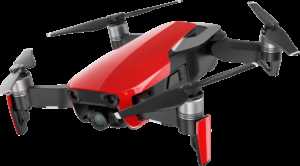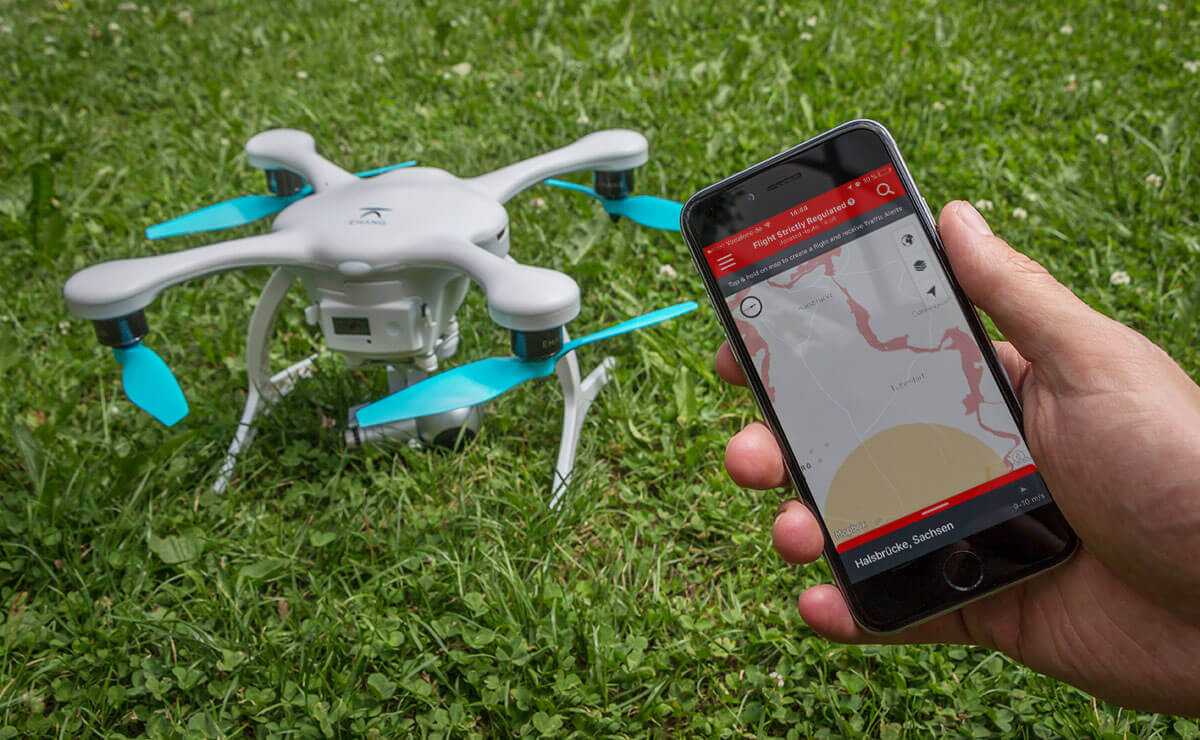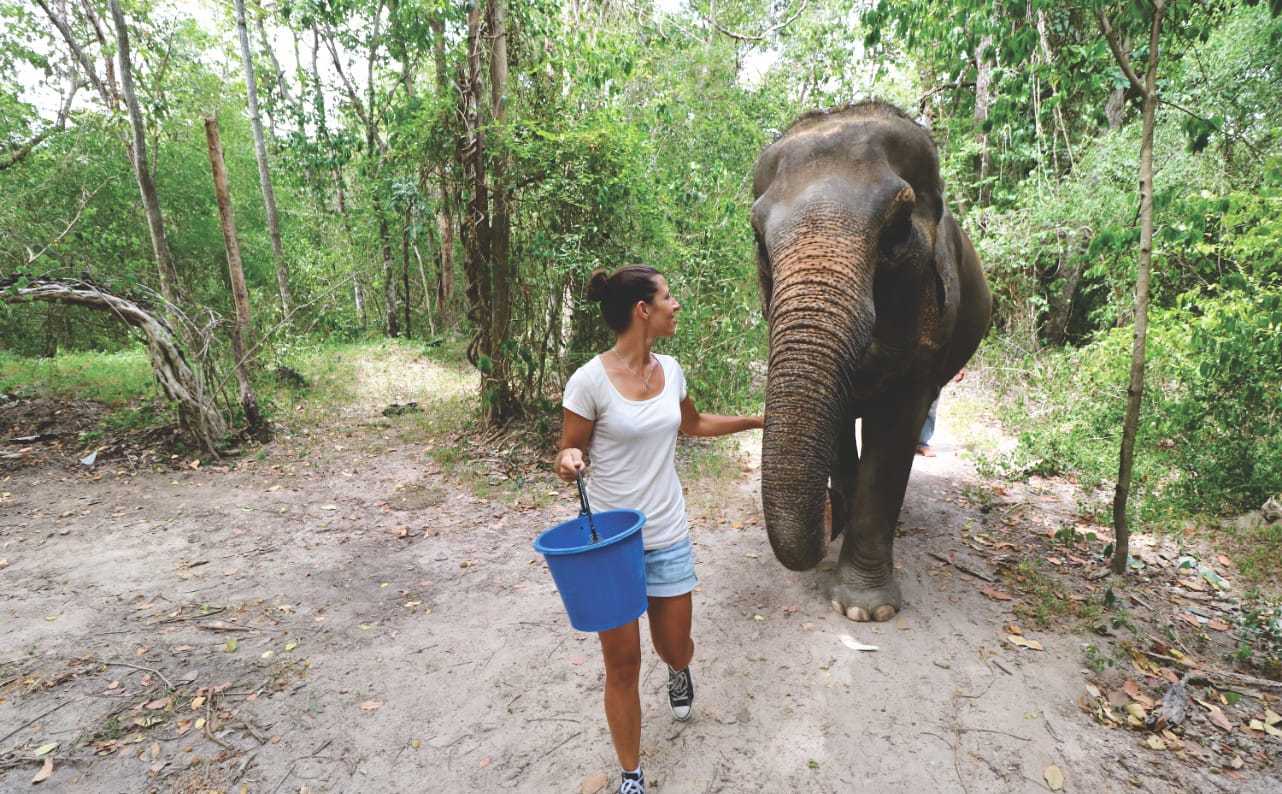
Drone in Thailand permit – all information!
Drones with a focus on filming and photography have been interested in me for a while, but until recently I was able to resist the buying reflex. By the middle of 2017 it was over with my resistance: for the first time I had the remote control of a drone in my hand and it had happened to me – I also wanted to have a drone! However, in order to use the drone legally in Thailand, you have to register them and get a permit. What has to be considered and how to proceed, this and more we want to show you in this article.
Drones are no longer a small niche, thanks to falling prices, ever better picture quality and easier operation, it is now a huge market. Probably the best-known manufacturer of high quality yet affordable drones is DJI, with models for beginners to professionals. Corresponding products were listed at the end of the post.
And if you call such a toy his own, of course you would like to use it. Thailand offers beautiful motifs: islands, jungles and mountains, everything is there and from the bird’s eye perspective, much more impressive. However, as in many other countries around the world, there are rules and regulations and they are very complicated: once a camera is on the drone you need permission to fly, regardless of weight.
With the drone to Thailand – what should be noted
For which drones you need a permit?
A permit is required if your drone meets one of the following two conditions:
- The weight of the drone is included more than 2kg
- the drone has one built-in camera, regardless of the weight of the drone
Both details are also shown in the following graphic of the CAAT.

Especially the second aspect concerns the majority of the popular drones, especially since most do not want to race drone but want to take beautiful pictures. The penalties for non-compliance reach up to 100,000 baht or 5 years imprisonment, because in addition to the penalties shown in the graph, which can still be due by the NBTC, more on that later. Reason enough to deal with the requirements, in Thailand it is quite advantageous not to be on the wrong side of the law.
Where can I register my drone?
From February 2018, new, more stringent requirements will come into effect. It is no longer sufficient to register with the CAAT, but you must first register the device with NBTC regarding the radio frequencies used. The process then looks in detail as follows.
We are Victoria, Chris and Liam and want to tell you about our life in Thailand, Germany and the rest of the world.

1st step: Registration at the NBTX
Use the drone to go to the National Broadcasting and Telecommunications Commission (NBTC) headquarters and register the radio frequencies. Only the following frequencies are permitted: 2.4 GHz, 100 mW or 5.8 GHz 1000 mW. It should be EU models and not American (I do not know why, but we got that information). The following documents must be provided:
The registration must be done at the NBTC, the report to a police station is no longer allowed.
On the Internet there is always the hint to find that due to the long wait for the CAAT registration the simple message at the NBTC enough to be safe as a tourist. Legally, to say the least, this is a very shaky advice that we do not want to express. You simply have no permission to fly without the CAAT permit, and that’s what it’s all about.
Step 2: Registration with the CAAT
In addition to the confirmation of the radio frequencies by the NBTC you need to register with the CAAT liability insurance, if not done in Thailand, then mandatory with English translation. The minimum cover amount is 1,000,000 Baht.
Two registration forms must be completed at the CAAT:
- a form with all relevant data of the drone
- a form with personal data of the pilot
Both forms can be downloaded from the CAAT website, both of which are now available in English. In the event that your English is not so good, we have created a template for the two forms of the CAAT, which you can see in the following three pictures.
Note: If you have a Certificate of Residence or Work Permit, it should be included as it can make the process easier. The application is also possible for short-term tourists, but a postal address is advisable, in case of doubt, the hotel, in which one intends to live.

To the Drone Thai Insurance website, e-mail contact in English runs smoothly
We will only address the requirements for the complete CAAT registration here. In doing so, we recommend settlement via a corresponding insurance provider, which acts as an intermediary. Insurance from foreign suppliers can cause problems, our insurance at Drone Thai Insurance costs 3000 baht per year. The processing of the registration with the CAAT costs further 1000 baht and you will receive a detailed overview of the necessary documents and forms.
For the insurance At DroneThai Insurance you need:
- completed insurance application
- A photo of the complete drone with propellers, ready to fly
- A photo of the serial number and the QR code, which is usually found under the battery
- Photo of passport and visa, both with date and signature.
After sending and examining the documents the annual policy has to be paid, in the case of the Mavic Pro we have decided on the 3000 Baht tariff.
For the registration with the CAAT by Drone Thai Insurance another 1000 Baht are due. The necessary documents include:
- Complete the form “Drone Pilot Register form“
- Complete the form “Personal Record Information”
- Confirmation of the drone by the NBTC
- Optional: granting a power of attorney, submission will be sent by the insurance company
- 6 passport copies, main page and visa
- 4 passport photos
After sending by email and checking the documents by the insurance company, all documents must be sent by post to the insurance company, which takes care of the forwarding.
Of course, you can also go to the CAAT headquarters in Bangkok or send the documents by e-mail to the CAAT – the registration will not be completed any faster, and you will not have anyone who takes a look at the completeness of the documents in advance. It may take some time until the first negative feedback from the CAAT is received. We found the 1000 baht well spent for the service provided.
Insurance can not really accelerate the process and the specified 2 months currently appear as a very optimistic assessment.
How much is the registration and what are the penalties?
The registration itself with the CAAT is free of charge, whereby we prefer to pay the 1000 Baht for the service of Drone Thai Insurance. The cost of insurance in Thailand is around 3,000 baht per year. The cost of registering with the NBTC seems to vary, with common models like DJi they are cheaper than in-house developments that are subjected to more complex tests.
With the punishments one can orient oneself so far primarily on the threatened punishments, which are up to 100,000 Baht or 5 years deprivation of liberty.
How long does it take to approve and how long is it valid?
Patience is required – we have waited almost six months for our approval, even though we submitted the documents in July 2017 – around 5 months before the tightening of the regulations. Other pilots had only 3 months to wait, it was actually much faster with no one. Officially, 2-3 months are called.
The permit is valid for 2 years from the date of issue, but only in conjunction with valid insurance.

Find dream accommodation now *
Image already added
We use the Hanse Merkur for 10 years and have always had good experiences. And the price is also great!
Where can you fly and what restrictions apply when using the drone
A selection of the most important regulations is listed below. A complete overview can be found on the CAAT website.
- The maximum altitude is 90m.
- Visual contact to the drone must be ensured at all times, control by screen and GPS is not sufficient.
- The use is only allowed during the day.
- No fly zone within 9km from airports.
- 30m horizontal distance to persons, vehicles and buildings must be kept.
- Start and landing location must not be disturbed by surrounding objects.
- Prohibition of use if the life, property or rest of other people is endangered.
- Prohibition of Use in Restricted, Restricted and Dangerous Areas, further described in one of the following publications: “Aeronautical Information Publication – Thailand”.
- Prohibition of use near government buildings and hospitals.
- Flying near or in clouds is not permitted.
- Flying over towns, villages or crowds is not allowed.
- Flying in the vicinity of other flying objects with pilots is not permitted.
- The privacy of other people must not be impaired.
- Other people should not be bothered.
- No transport of dangerous goods or laser equipment.
In addition, flying is permitted, inter alia, in the following places only with granted special permission:
- Chiang Mai: permission must be obtained from the airport in the city if you want to fly
- Historical Park in Ayutthaya: The park administration gives permission, we do not have our own experiences here. Whether it is handled similarly in Shukhothai is not known to us.
- National ParksGeneral flight ban, special permits are possible.
- IslandsMany islands (some of which are Marine National Parks) are classified as No Fly Zones, according to the AIP Information amongst other things
Ko Chang, Ko Phayam, Ko Ra, Ko Phra Thong, Ko Surin Tai, Ko Surin Nua, Ko Tasai, Ko Born, Ko Similan, Ko Payang, Ko Phuket 90%, Ko Mai Thon, Ko Phi phi Don, ko Phaluai, Ko Samui, Ko Katen, Koh Phangan, Ko Tao, Ko Khram Yai
There is also a Google Earth map with corresponding exclusion zones, the KMZ file for use with Google Earth can be found at the CAAT – and there are many red areas drawn. In addition, we have found this website with marked No Fly Zones.
Apps for iOS and Android that can help you
For both iOS and Android, the App Hover is a great help in showing No Fly Zones.
Related Posts
-

Dji mavic air: all information about the new drone
DJI Mavic Air: All information about the new drone DJI presented its new drone, the DJI Mavic Air, on 23.01.2018. With the new model, the Chinese…
-

The best drone apps: these air traffic controllers will help you
The Best Drone Apps: These air traffic controllers will help you Apps for the smartphone can help us a lot when flying a drone. A look into a drone app…
-

Thailand • tour with elephants at wfft • fair – without elephant riding!
Travel Report • 1 day with elephants in Thailand (Vlog to the travel report) Edwin Wiek, a Dutchman, sits in his car. He drives down the street, happy…
-

Lets eyes laser »information on methods, cost risks in 2019
Laser eye? costs Risks of Eye Laser OP Laser eye surgery is one of the most common procedures in modern laser surgery. More and more patients have their…



